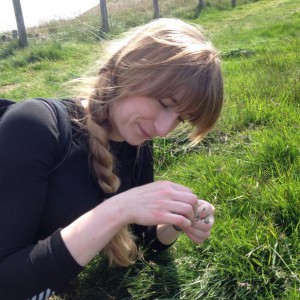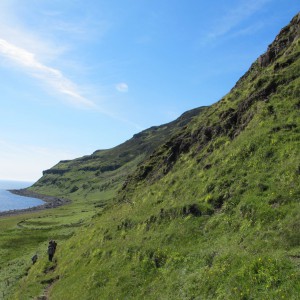
Hello! I’m Emma, the newly-initiated Upland Ecosystems apprentice. I am now a month into my apprenticeship based with the National Trust for Scotland (NTS), and I’m already very busy and privileged to be so.
I have an exciting and challenging remit. That is, to get to grips with upland grasslands, including their component higher and lower plants, but especially the fungi. This gives me the opportunity to spend time with a variety of organisations and expert individuals in botany, bryology and mycology. Being based with the NTS I hope to bring together new skills in species identification with an understanding of threats to upland communities and some perspective on how to manage them. And there’s a lot of ground to explore: the NTS own 78,000 hectares of countryside and 46 Munros. Perhaps I can ‘bag’ 1/6th of the Scottish Munros in the name of my apprenticeship? For now, though, a quick summary of what I’ve been up to so far.
Things kicked off with a wildflower refresher with the NTS countryside team on the Isles of Mull and Iona. The trip is an annual event, held in different locations each time, and led by Lindsay Mackinlay, my mentor and NTS Nature Conservation Advisor. The enthusiasm of staff to ‘talk plants’ and take knowledge back to their respective locations was inspiring. It was not all showy flowers, however, and I worked hard get to know more grasses and sedges, to the delight of some and dismay of others!
Next, I attended a mountain plant identification course at Ben Lawers NNR. This area is known for being exceptionally rich and has been ‘well botanised’ since Victorian times. The NTS spend much care and attention on monitoring and maintaining important plant populations here, and it was fascinating to see active conservation of the lesser-appreciated plant kingdom.
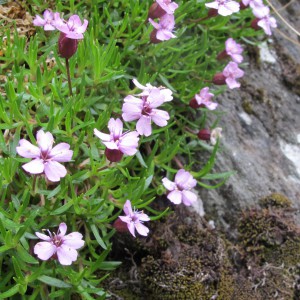
Moss Campion, Silene acaulis, a cushion-like mountain flower. Said to indicate, to botanists, a promising plant area and is therefore often passed by for search of rarer species.
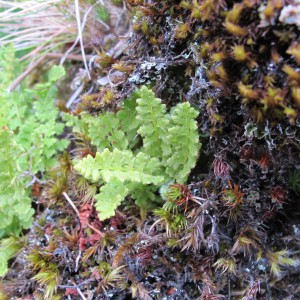
Alpine Woodsia, Woodsia alpina, is a superb fern, and it’s easy to see why one might be tempted to take it home to enjoy. In fact, a number of enthusiasts are known to have lost their lives in pursuit of rare Woodsias. In Britain, these are at the southern limits of their range but collecting of wild plants in the height of nineteenth-century Pteridomania or ‘fern fever’ has depleted populations. It’s impossible to know what the status of these plants would be in the absence of such rampant collecting.
Most recently I joined, for a second time, a small band of bryologists for a recording day in Dumfriesshire. An important activity, as biological recording (and accurate species identification) underpins nature conservation. Through the dedication of volunteers, recording generates the most basic information of where species occur nationally, and we can spot changes over time. After a long day of paddling up hilly streams in search of mosses and liverworts I was also rewarded with some mushrooms.
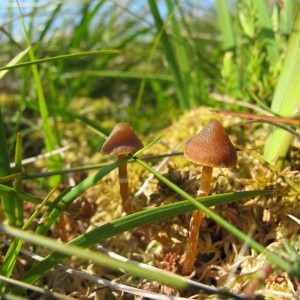
A (probably inedible) treat. To my untrained eye it looks like a ‘Little Brown Mushroom’ or LBM. I believe it may be a Galerina species, but I’ve lots of learning to do! Many fungi need to be identified or confirmed by use of a microscope.
My second mentor, the Naturally Talented Ali Murfitt, is of previous apprenticeship fame and we have been sitting down for mycology study sessions in preparation for the autumnal fungi season. It is testament to the quality of the Natural Talent scheme that she is now able to lend her expertise to me, and it’s fantastic to be learning from her experience.
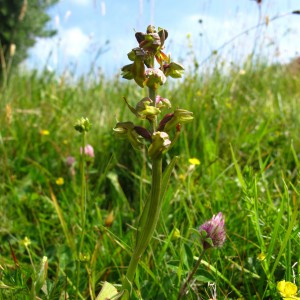
A Frog Orchid, Coeloglossum viride. Successfully ‘keyed out’ by NTS conservation volunteers with a little help.
Other highlights have included: the midsummer Bioblitz at the Royal Botanic Gardens Edinburgh, joining Neville Kilkenny, field mycologist (and another former apprentice), on his survey work, and sharing my wildflower knowledge with conservation volunteers on a visit to Kittochside, East Kilbride.
Until next time,
Emma.

